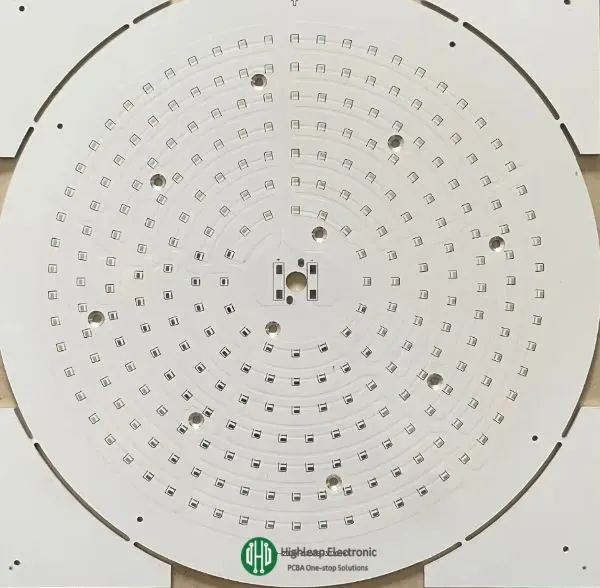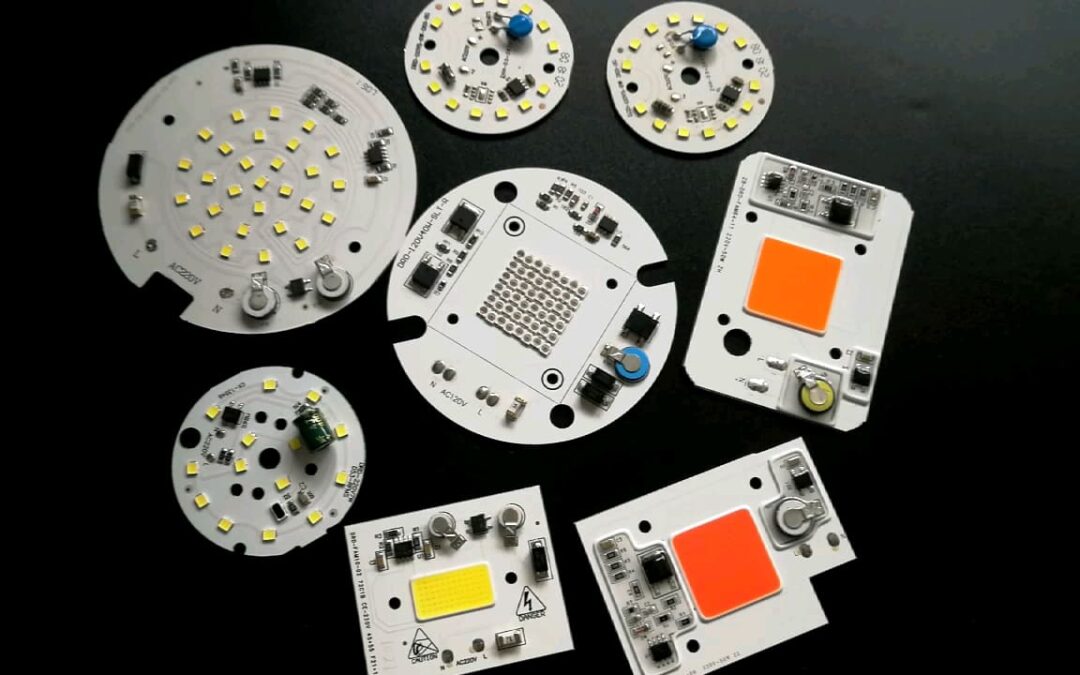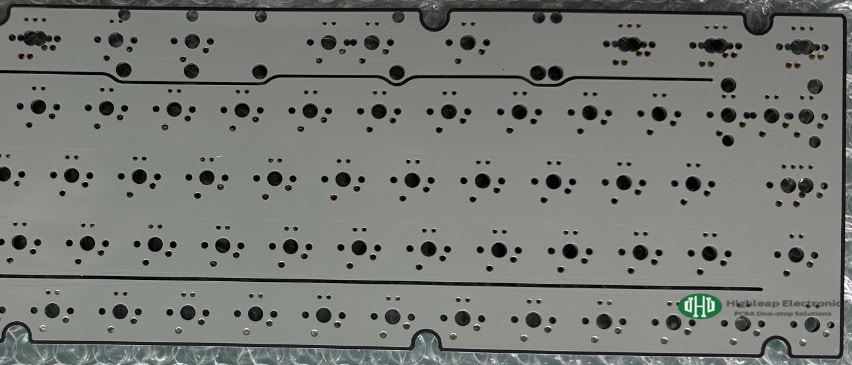Back to blog
Classifying FR4 TG Circuit Boards
Introduction
FR4 TG (Glass Transition Temperature) circuit boards are a crucial component in modern electronics, especially in applications where high-temperature resistance, durability, and efficient signal transmission are essential. In this comprehensive article, we will delve deeper into FR4 TG circuit boards, examining their properties, various types, and diverse applications in industries such as aerospace, automotive, and more.
Understanding FR4 TG Circuit Boards
FR4 TG circuit boards are a type of thermoset organic polymer laminate that offers outstanding thermal performance. Their glass transition temperature, often referred to as Tg, plays a pivotal role in semiconductor manufacturing by determining how effectively heat is managed within the material. Tg is a critical property for efficient thermal management and heat transfer in electronic components.
Classifying FR4 TG Circuit Boards
1. Thermal Conductivity per Unit Thickness: FR4 TG circuit boards are distinguished by their thermal conductivity per unit thickness. They are designed to facilitate the efficient transfer of heat, making them ideal for applications where heat dissipation is critical.
2. Thermoset Organic Polymer: These circuit boards are made from a thermoset organic polymer that exhibits excellent durability, resistance to abrasion, and resistance to chemical corrosion, particularly at high temperatures.
3. High-Performance Thermoset Polymer Laminate: FR4 TG circuit boards are formulated as high-performance thermoset polymer laminates, combining components such as POX and epoxy resin to create a resin that meets the demanding requirements of semiconductor manufacturing.
The Role of Thermal Conductivity in FR4 TG Circuit Boards
During the operation of electronic components, heat is generated, and effective heat dissipation is crucial to maintain the desired performance levels. FR4 TG circuit boards excel in heat management through surface-to-surface thermal conduction. When a Ball Grid Array (BGA) package generates heat inside, these circuit boards facilitate the efficient transfer of heat, ensuring normal production cycle times and preventing overheating.
Differentiating FR4 from PTFE
FR4 vs. PTFE: It’s essential to clarify that FR4 is not PTFE (polytetrafluoroethylene). While both materials serve important roles in the world of printed circuit boards (PCBs), they have distinct characteristics and applications.
FR4 Composition: FR4, which stands for “Flame Retardant 4,” is a commonly used material for PCBs. The first FR-4 circuit boards were constructed using glass cloths impregnated with resin. This glass cloth had some conductivity properties due to its quartz content.
Epoxy Glass Replacement: In the evolution of PCB materials, the original glass cloth used in FR4 was replaced with epoxy glass, which further enhanced the conductivity of FR4 circuit boards. This transition allowed for improvements in electrical properties and made FR4 a popular choice in the industry.
Anisotropy of FR4 TG Circuit Boards: One crucial distinction to note is the introduction of FR4 TG circuit boards. These boards have a higher temperature rating compared to other FR4 boards, thanks to their anisotropic nature. Anisotropy in this context means that the material’s properties vary depending on the direction of measurement. This property makes FR4 TG circuit boards suitable for specific applications where temperature resistance and stability are paramount.
PTFE (Polytetrafluoroethylene): On the other hand, PTFE, known for its non-stick and heat-resistant properties, is a distinct material. It is commonly used in the production of PTFE-based PCBs, often referred to as “Teflon PCBs.” PTFE is prized for its low dielectric constant, low dissipation factor, and excellent high-frequency performance, making it suitable for applications requiring minimal signal loss at high frequencies.
In summary, while both FR4 and PTFE are essential materials in the world of PCBs, they serve different purposes. FR4, with its various formulations including FR4 TG, is favored for its versatility and robustness, while PTFE is chosen when exceptional electrical performance at high frequencies is a priority.
Common Materials for high TG PCB
High-TG printed circuit boards are primarily helpful when high accuracy and stringent quality requirements are necessary for the proper functioning of an electronic product. We source materials only from reputable and reliable suppliers, ensuring our products’ performance in any condition. The table below contains the high-TG PCB materials we commonly use:
| Material Manufacturer | Material Type | Tg (°C) |
|---|---|---|
| Nelco | N4000-6 | 175 |
| Isola | 370HR, IS410 | 180, 180 |
| ITEQ | IT180I | 180 |
| ShengYi | S1000-2 | 180 |
| Nanya | NP-180 | 180 |
| TUC | TU768 | 170 |
| VENTEC | VT-47 | 170 |
These high-TG PCB materials enhance the performance and reliability of circuit boards, making them suitable for demanding applications across various industries.
Advantages of FR4 TG Circuit Boards
FR4 TG circuit boards offer numerous advantages that make them highly desirable for various applications:
- Exceptional Durability: They are resistant to abrasion, chemical corrosion, and degradation at high temperatures.
- Strong Substrate Bond: FR4 TG circuit boards maintain a robust bond with the substrate, protecting against damage caused by circuit board handling.
- Impact Resistance: They possess good impact strength, making them suitable for applications involving threaded holes.
- Chemical Inertness: FR4 TG circuit boards are chemically inert, ideal for applications with hazardous materials.
- Low Coefficient of Friction: Due to their high mineral content, they exhibit lower friction than many other materials used in electronics assembly.
- Excellent Chemical Resistance: These circuit boards are ideal for military applications, offering self-cleanability and minimal maintenance.
- Reduced Warpage: FR4 TG boards minimize warpage, reducing stress on threaded holes and fittings.
- Good Electrical Performance: They exhibit reliable electrical performance, making them suitable for IC packaging.
- Low Coefficient of Thermal Expansion: The low coefficient of thermal expansion minimizes stress on silicon semiconductors due to temperature fluctuations.
- Moisture Permeability: FR4 TG boards are permeable to water vapor, making them suitable for moisture-sensitive applications.
- Surface Contamination Prevention: They minimize surface contamination, reducing strain relief failures caused by electrostatic discharge (ESD).
- Mechanical Properties: FR4 TG boards possess excellent mechanical properties, crucial in IC packaging.
- Flexibility: Their high flexibility makes them ideal for applying copper interconnects to curved surfaces.
- High Dielectric Constant: FR4 TG boards exhibit a high dielectric constant, reducing anisotropy and enabling efficient signal transmission.
Disadvantages of FR4 TG Circuit Boards
While FR4 TG circuit boards offer numerous advantages, they also have some disadvantages:
- Moisture Sensitivity: FR4 TG boards are sensitive to moisture, which can affect their electrical properties. Proper drying is required before storage or shipment.
- Static Electricity Sensitivity: They can accumulate static charges, attracting dust and dirt.
- Limited Resistance: FR4 TG boards are not resistant to abrasion, chemicals, high temperatures, or flames.
- Longer Drying Time: HDPE FR4 TG boards take longer to dry compared to MPI FR4 TG boards due to their thicker profile.
Exploring FR4 TG Properties and Applications
FR-4 TG circuit boards Properties
FR-4 TG circuit boards are renowned for their outstanding properties and versatility. Let’s examine these properties and their applications in greater detail.
1. Tg Range:The Tg of FR4 TG circuit boards typically falls within the range of 190°C to 210°C, making them suitable for high-temperature applications.
2. High Dielectric Constant:FR4 TG boards exhibit a high dielectric constant, making them ideal for transmitting high-power signals with minimal impedance. They are well-suited for fast, low-impedance power transmission lines.
3. Temperature Stability:Optimal performance of FR4 TG circuit boards is achieved within a temperature range of -40°C to 125°C. Design considerations should account for these temperature limits.
4. Low Impedance:Due to their high dielectric constant (k), FR4 TG circuit boards offer lower impedance compared to other FR4 variants, resulting in faster edge rates and rise times, ultimately improving reliability.
Applications of FR4 TG Circuit Boards
FR4 TG circuit boards find extensive applications across various industries due to their unique properties:
- Industrial Applications
- Automotive Industry
- Aerospace
- Military and Defense
- Electronics Technology
- Medical Devices
Conclusion
FR4 TG circuit boards are indispensable in modern electronics, providing exceptional thermal performance, durability, and efficient signal transmission. With their unique properties and versatility, they cater to a wide range of applications in industries such as aerospace, automotive, military, and electronics technology. As technology continues to advance, FR4 TG circuit boards will remain a vital component in meeting the demands of high-temperature and high-performance electronics.
PCB & PCBA quick quote
Related Articles

Metal Core PCB,MCPCB,Thermal Conductive PCB Material Guide
Metal Core Printed Circuit Boards (MCPCBs)Hey, welcome to the interesting world of Metal Core Printed Circuit Boards (MCPCBs)! Ordinary PCBs use an FR4 dielectric core, but MCPCBs are different. They use a metal substrate, such as aluminum, copper, or iron alloys, as...

Understanding Aluminum Substrate PCB: Types and Advantages
[pac_divi_table_of_contents title="On this article" default_state="closed" included_headings="off|on|on|off|off|off" exclude_headings_by_class="on" active_link_highlight="on" level_markers_3="icons" title_container_padding="10px|15px|10px|15px|true|false"...

Characteristics and Applications of Black Core PCB Material
[pac_divi_table_of_contents title="On this article" default_state="closed" included_headings="off|on|on|off|off|off" exclude_headings_by_class="on" active_link_highlight="on" level_markers_3="icons" title_container_padding="10px|15px|10px|15px|true|false"...
Take a Quick Quote

